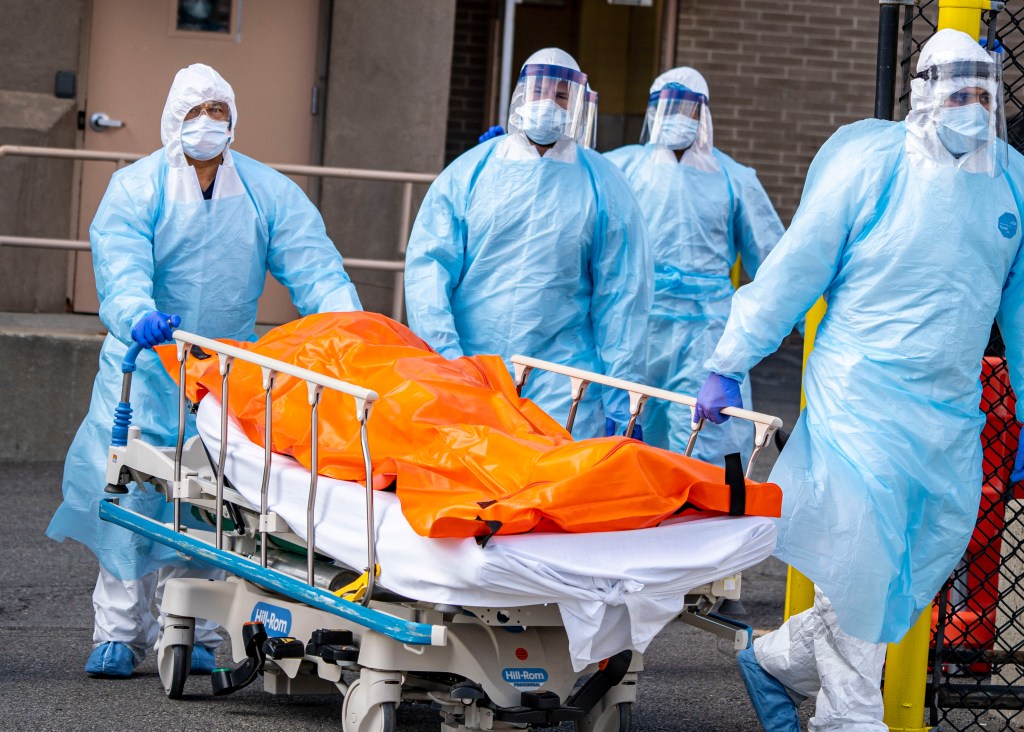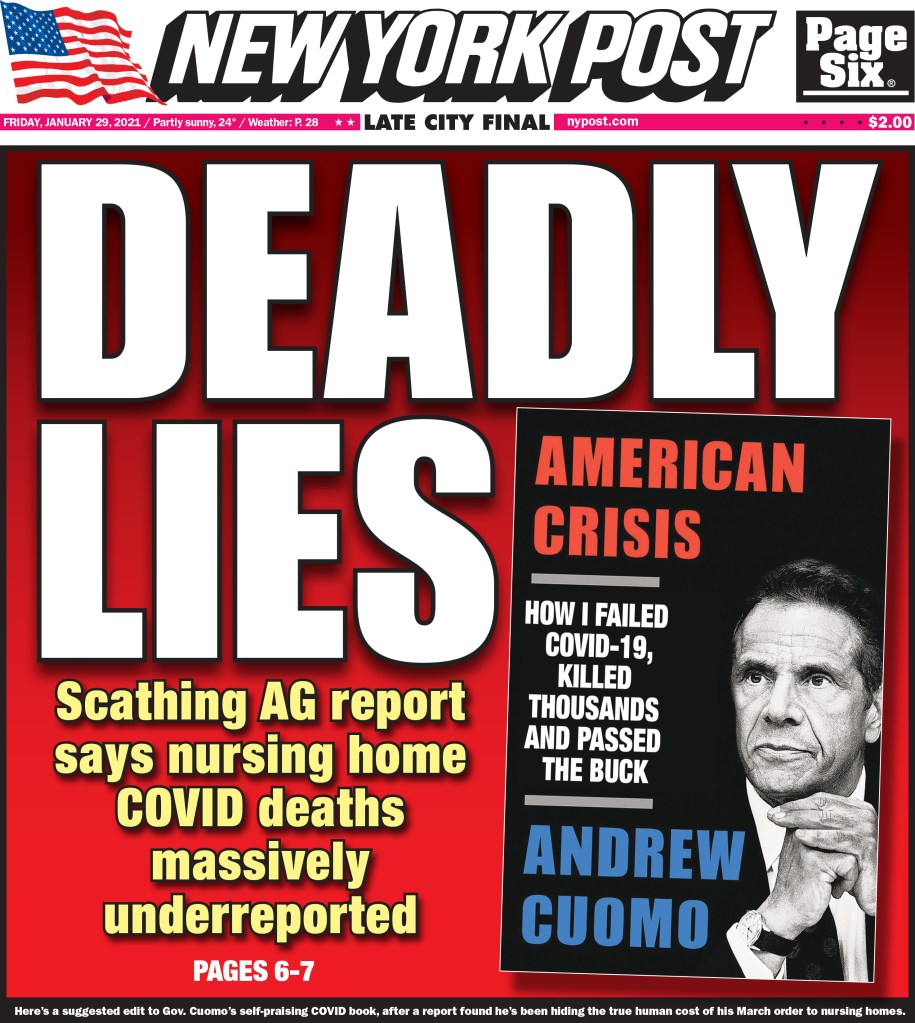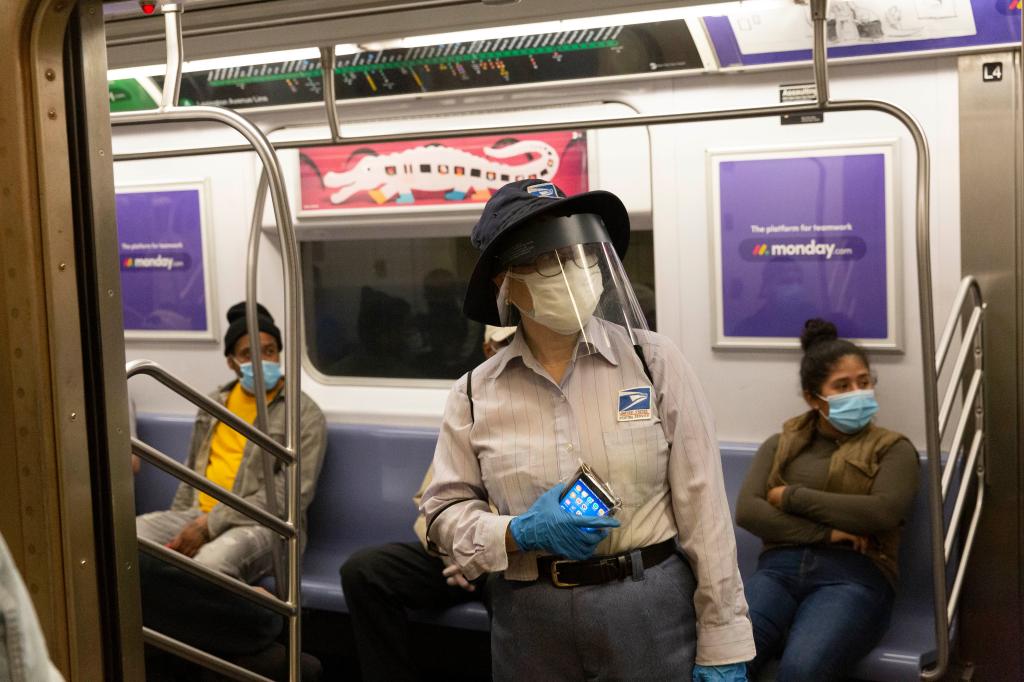NYC’s initial — and deadliest —COVID wave in 2020 began over a month earlier than previously thought: report
Contact The Author
New York City’s initial, and deadliest, COVID wave in 2020 started spreading weeks earlier than previously thought, according to a new analysis.
The probe, conducted by conservative think tank The Empire Center, determined that the deadly outbreak began spreading about a month earlier than it was believed — in early March.
“With the benefit of hindsight, it’s now clear that New York’s outbreak began a month or more earlier and spiked six times higher than shown by the available testing data, which was scarce in those early days,” the report concluded.
“The infection rate likely peaked around March 19, three weeks earlier than previously believed – an insight that might have significantly changed how officials handled the crisis.”
Overall, the report’s analysis showed that the five boroughs had a higher mortality rate from COVID-19 during the three-month span between March 19-June 10, 2020 than most countries have endured over the pandemic’s first three years.
The report found that the peak arrived in early March as then-Gov. Andrew Cuomo and then-NYC Mayor Bill de Blasio bickered over how best to respond — and as New Yorkers basically self-initiated a shutdown by canceling planned events, closing businesses, and shifting to work from home, helping to bend the curve before the stay-at-home orders.
The report suggests that if state and local officials had known the pandemic had already hit its peak locally, they might have avoided the mistakes made in late March, including panicking over hospital capacity.
“[The Cuomo administration] could have avoided spending time and money to build emergency hospital facilities that went largely unused,” they wrote.
“And they might never have issued the March 25 directive transferring Covid-positive patients into nursing homes – a decision that likely added to the high death rate in those facilities and contributed to Cuomo’s political downfall.”
Still, the report found that many other cities that faced the same problems fared better during the pandemic — differences that the report chalked up in part to New York’s extraordinary density and hub for international trade and tourism.
The report calls on state officials to order a “close review” of the state’s pandemic response that would focus on the earliest days of the outbreak in January and February 2020, including a review of early disease detection strategies absent effective testing and to better coordinate supply stockpiles.
It says that Gov. Kathy Hochul’s decision to hire a consulting firm to study the response is insufficient and recommends a special independent commission or review that lawmakers head up.
Hochul’s office did not immediately respond to a request for comment.
Cuomo’s spokesman, Rich Azzopardi, dismissed the report and said the earlier COVID timeline it laid out was nothing new.
“This is some real dog-ate-my-homework stuff from the right wing Empire Center,” said Azzopardi.
“We’ve said for years that the virus was here for months before the first case and that no one, the feds, the CDC, or the World Health Organization knew to sound the alarm – much less do a unified response.”
Other highlights in the report include:
- New York City’s first wave of the coronavirus pandemic remains one of the deadliest in the world, having killed almost 23,000 residents, or 0.3 percent of the city’s population, in just three months.
- During its worst 12 weeks, from March 19 to June 10, 2020, the city reached a higher Covid-19 mortality rate than 85 percent of countries have reported for the entire three-and-a-half years of the pandemic.
- Among 415 countries and sub-regions worldwide, the city’s peak 12-week mortality rate was the second highest, just behind Mexico City.
- Among 3,140 U.S. counties, the Bronx’s peak 12-week pandemic death rate was in the 99th percentile, Manhattan was in the 98th, Queens and Brooklyn were in the 97th, and Staten Island was in the 96th.
- New York’s first wave began weeks earlier than recognized at the time, and its infection rate likely peaked in mid-March.







